Last Updated on January 17, 2022 by
There is so much to share about Little Rann of Kutch that one post couldn’t do justice to it. I have spent A weekend in Little Rann of Kutch, and also explored the Indian Wild Ass Sanctuary. In both the posts, I have talked about the thriving wildlife in the arid land which is situated 130 km from Ahmedabad, India. In the current post, I talk about humans surviving here for centuries and running a business for generations together in the salt pans. The work done by the salt farmers of Little Rann of Kutch on the salt pans is nothing but amazing!
Table of Contents
The Agariyas of Little Rann of Kutch
Centuries ago it was part of the sea until an earthquake turned it into arid land. Water, however, exists 30 feet below the hard, sun-baked crust. Around this time, a community called Agariyas (Salt farmers) noticed that water below ground level was brine water and concentrated enough to produce salt. And hence a business was born on which the economy of the area has kept afloat all these years. The business of Salt Pans of Little Rann of Kutch is thriving all thanks to the salt farmers.
According to a survey, there are no more than 300 Agariya families, living in the Nanu Rann (Little Rann of Kutch). Just like the Maldhari community of Gir, the Agariyas are pacifists who do not harm the endemic wild ass population that is growing every year.
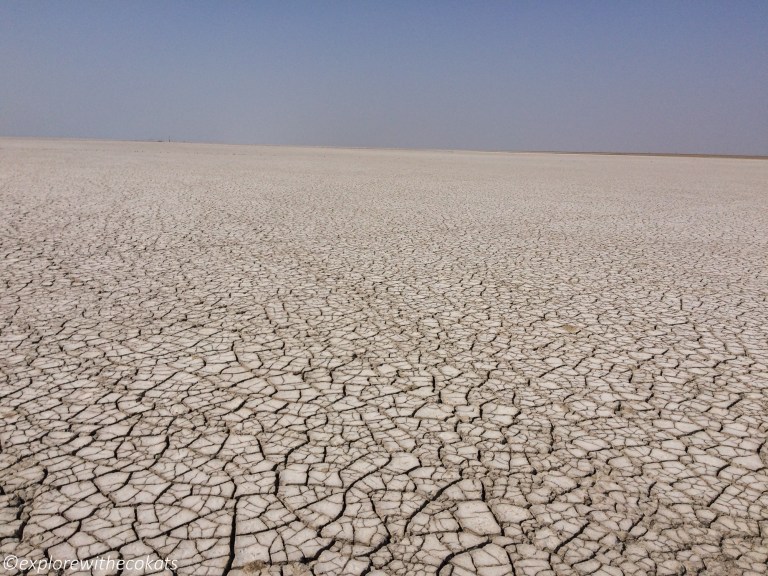
A Discussion with the Salt Farmers of Little Rann of Kutch
I happened to visit the salt pans of Little Rann of Kutch which literally existed in the middle of nowhere. It was impossible to imagine that in the beige coloured monotony of cracked mudflats, a thriving salt farm would be booming. Intrigued to know the process and how much profit they make, I struck a conversation with 2 salt farmers working in their family salt pans and asked a lot of questions.
What does Agariya mean?
The Agariya community has been farming salt for centuries, one generation after the next. In the local language, agar means salt and those who farm it are called Agariyas. The lives of the salt farmers of little rann of kutch are divided into two: eight months in the saltpans and the remaining four in villages on the periphery of the Little Rann.
From the months of September to June, the entire Little Rann area turns dry and arid. This is when the Agariyas come to the desert and set up their shacks and reclaim their traditionally demarcated wells to produce salt.
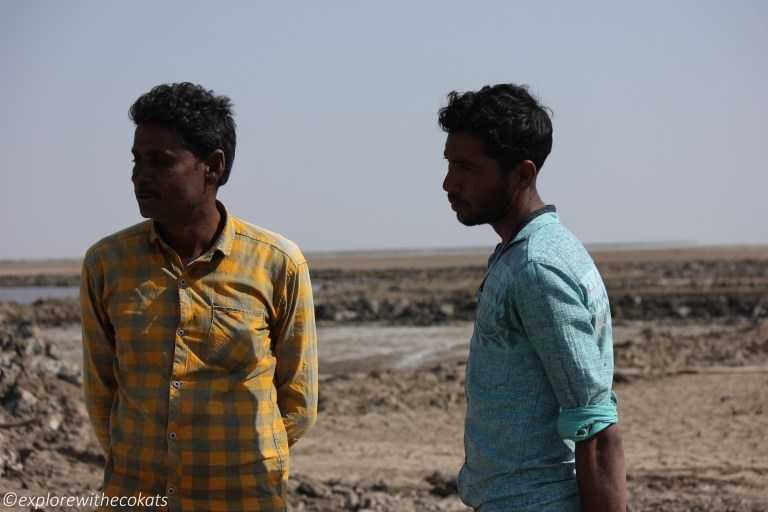
Process of Salt Farming
- Once the monsoon waters recede in the month of October, these farmers walk in the swamp; which still has about 1 foot of water to mark the borders of the salt pan. These swamps are 1-2 km away from the mainland and due to the slippery nature takes over an hour to reach here. Farmers carry their food and drinking water every day.
- The borders of the square-shaped salt pans are made using basic farm tools and by hands.
- By the month of November when the water dries up in the desert, the brine water is pumped to the surface using diesel pumps and spread out in salt pans. The pumped out brine water is directed into square-shaped salt pans where the natural process of evaporation begins. The Agariyas live here on salt pans of little rann of kutch with their family in a makeshift shanty.
- The brine water concentration is about 4% in the first salt pan which needs to be further concentrated upto 28% in order to harvest the salt. So it passes from one salt pan to next seven times.
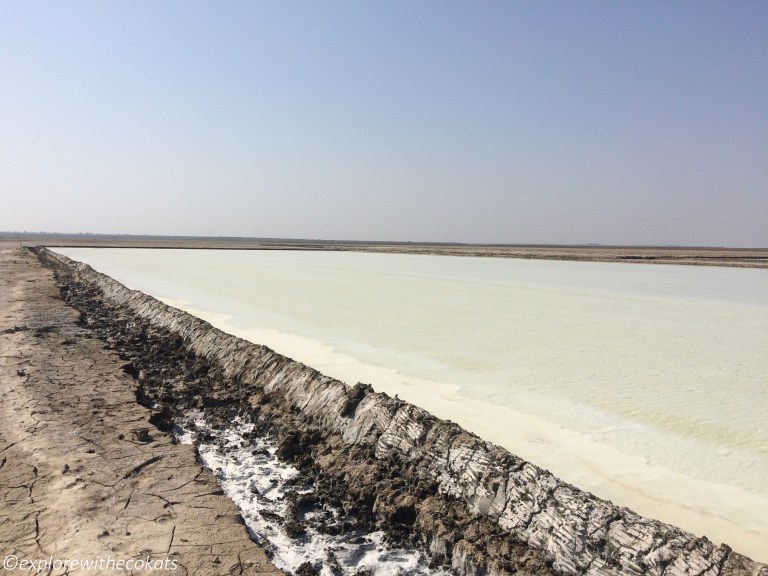
- The salt layer is continously scraped with heavy wooden rakes so as to develop smaller salt crystals.
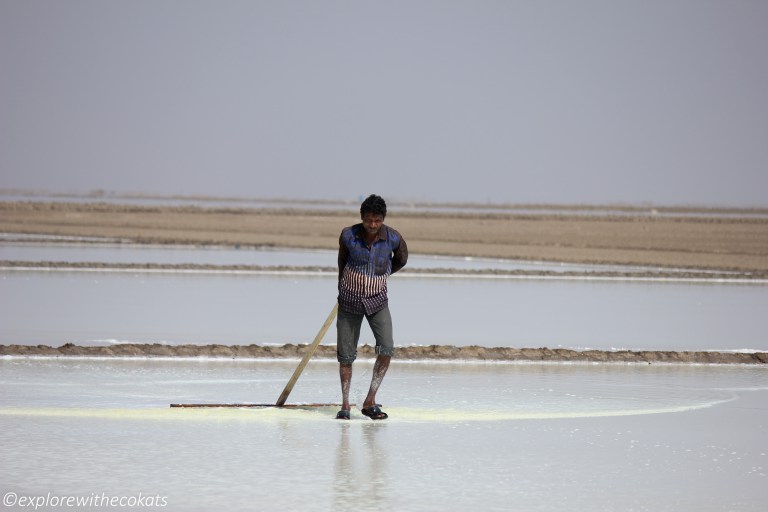
- It is then piled up on the sides of the pans to be collected later.
- Each salt pan produces approximately 400 ton of salt. A family of 4-5 people is able to produce about 800 ton salt in peak season.
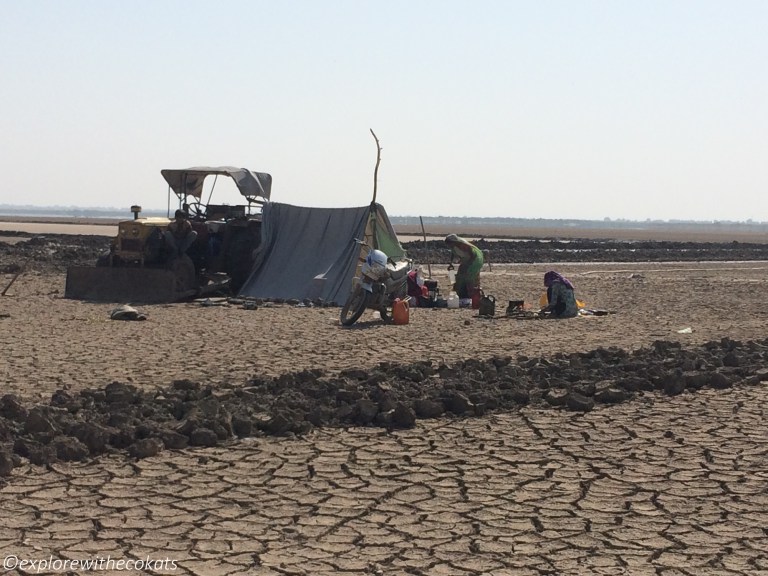
- The harvest season comes to an end around June with the monsoon setting in. The families pack up their stuff and return to villages to spend next 4 months doing odd jobs. The monsoons come and wash their salt fields away, turning the desert into sea.
All this hardship and I was sure that they would be earning handsome amount of money. Who in their right mind would spend 10 hours of day in the scorching 45 degrees, right? That’s when they informed me they are paid Rs. 800 per ton ( US$10) and earn about Rs. 6,40,000/year (US$10,000) for 800 tons after working for 1800 hours. All those complaining about life being hard, trust me you have something to think about!
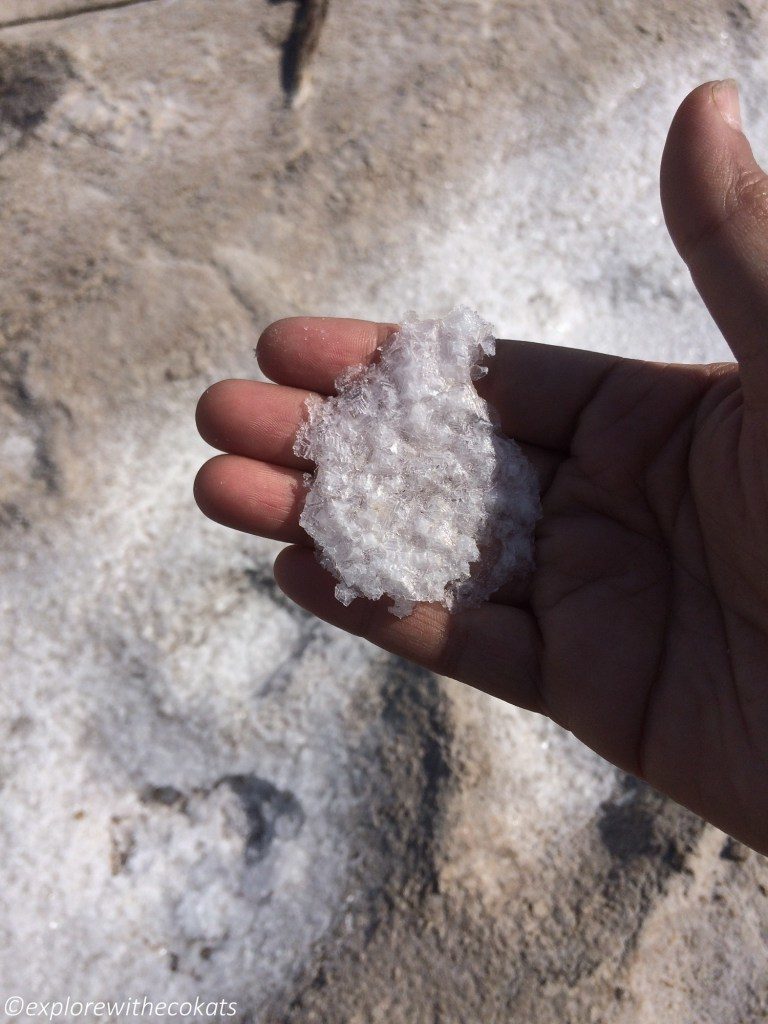
Once back home, I read a couple of articles about their health issues and other social problems and a statement which shook me was: Salt pan workers suffer an ignoble fate: their hands and feet are difficult to burn during cremation because of the salt content.
It is good that there are many NGOs coming forward to help these farmers by providing solar panels. This has reduced their burden of diesel consumption. NGOs are also giving basic education and health facilities.
No sustainable tips this time!
Pin this post!
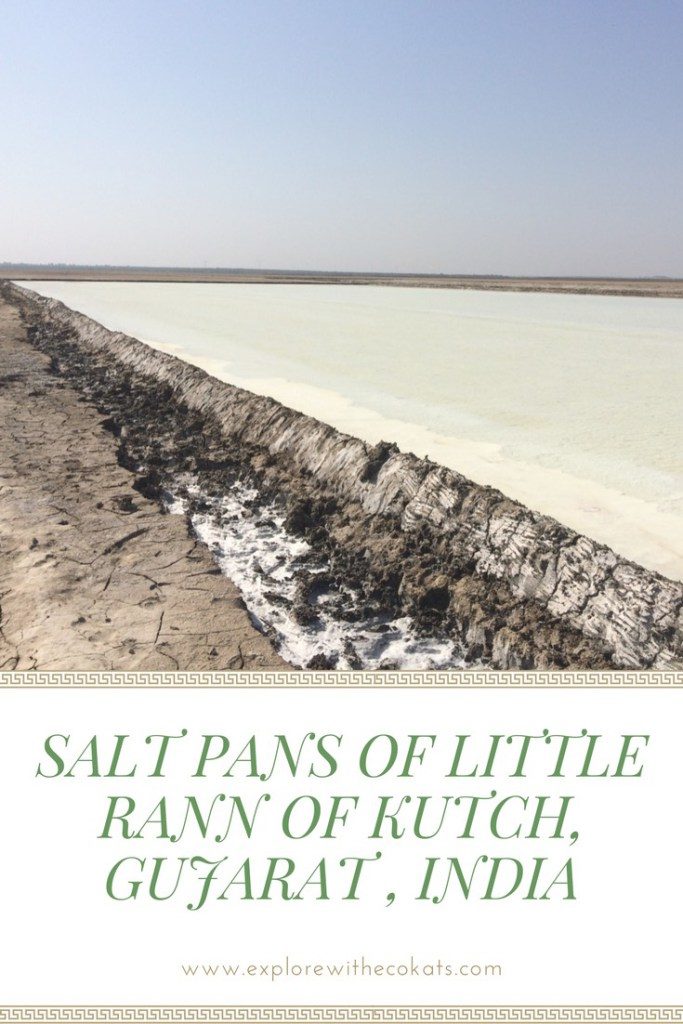

1 comment
Hello,
my name is Roberto, I’m writing from Italy.
I’ve read your very interesting article; I’m really interested in to see and photographing that situation… could you please kindly let me know how the visit is organized? Is there a operator managing the visit? Could you please provide me a name/number/e-mail address to contact for information about it?
Many thanks in advance
Kind regards
Roberto